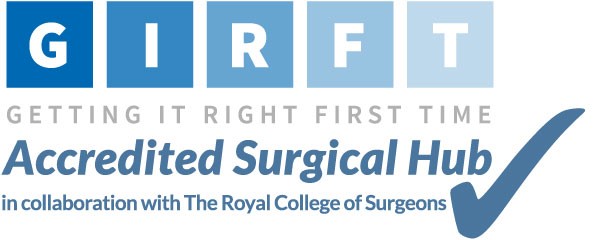- Cataract
Cataracts
Cataracts are small, cloudy patches that form in the eye’s clear natural (crystalline) lens and obstruct your vision. It occurs when proteins in the lens break down and clump together.
While cataracts may initially have little impact on your vision, they can develop as you age and start to interfere with your ability to carry out normal day-to-day activities if left untreated. The only cure for a cataract comes through a surgical procedure.
Cataracts can interfere with both the level of vision and quality of vision. Some people might experience difficulty with driving, for example, or find that they struggle to read even with their glasses or contact lenses.
What are the symptoms of cataracts?
Cataracts can develop at different rates. In many patients they develop slowly, however this is not always the case. If over time, you find yourself experiencing any of the following symptoms, it is advisable that you make an appointment with your Optometrist.
- Decreased clarity of vision which can’t be corrected with glasses or contact lenses.
- Increased sensitivity to light and glare around bright lights.
- Changes to your perception of colour as they appear faded or dull.
- Deteriorating night vision and difficulty seeing in poor or low light conditions.
If a cataract is detected your Optometrist will be able to refer you to the Lancashire Eye Centre for treatment, if required.
Our Cataract service has no waiting list, and we can offer a 6-week service from referral to operation for everyone.
When should I have cataract surgery?
The development of cataracts can cause a range of symptoms to include blurred, cloudy or reduced quality of vision. These symptoms can make it difficult to perform everyday tasks such as driving and reading.
If you feel like cataracts are having an impact on your daily life, and are preventing or reducing your ability to carry out normal day-to-day activities, it might be time to consider cataract surgery.
If you have received a referral from the NHS, we can have your cataracts treated from as quickly as just 4 weeks.
How does cataract surgery work?
Cataract surgery is a straightforward and quick procedure that removes your cloudy lens from within your eye and replaces it with a new synthetic lens, often referred to as an intraocular lens (IOL). This new lens will significantly improve your vision, making it both clearer and brighter.
As the procedure generally takes between 15 to 20 minutes to perform and is carried out under local anaesthetic, which is administered using eye drops, you should be able to return home on the same day.
recovery
You should be able to go home on the same day as your cataract surgery.
You may have a pad and plastic shield over your treated eye when you leave hospital, which can usually be removed the day after surgery.
Feeling should start to return to your eye within a few hours of surgery, but it may take a few days for your vision to fully return.
It's normal to have:
- grittiness
- watering
- blurred vision
- double vision
- a red or bloodshot eye
These side effects usually improve within a few days, but it can take 4 to 6 weeks to recover fully.
If you need new glasses, you will not be able to order them until your eye has completely healed, usually after 6 weeks.
Cataract surgery has a high success rate in improving your eyesight and should allow you to return to your normal activities, like driving.
When to seek help
Contact your eye surgery department as soon as possible if you experience:
- increased pain and/or redness
- decreased vision
Dos and don'ts
For the first few weeks after surgery:
Do:
- use your eye drops as instructed
- take it easy for the first 2 to 3 days
- use your eye shield at night for at least a week
- take painkillers if you need to
- bathe or shower yourself as usual
- wear your eye shield when washing your hair
- read, watch TV and use a computer
- use your shield, old glasses or sunglasses outdoors
- avoid swimming for 4 to 6 weeks
Don't:
- do not rub your eyes
- do not allow soap or shampoo to get into your eye
- do not drive until you get the all-clear from your doctor
- do not do any strenuous exercise or housework
- do not wear eye make-up for at least 4 weeks
- do not fly without seeking advice from your doctor
You could arrange for someone to help take care of you until your vision returns, particularly if the vision in your other eye is poor.
If you work, how soon you can return will largely depend on your type of job and if you need new glasses.
Using your eye drops
Before you leave hospital, you'll be given some eye drops to help your eye heal and prevent infection.
It's important to use your eye drops as instructed by your doctor.
Unless told otherwise, you should:
- start your drops the morning after the operation
- only use them on an operated eye
- wash your hands before using your drops
- do not stop your eye drops without advice from your doctor
- do not let anyone else use your eye drops
You'll be advised further about the use of eye drops at your follow-up appointment, usually 1 to 4 weeks after your operation.
At this appointment, you may be given advice on when to stop using your eye drops and when to apply for new glasses.
How to apply eye drops
- Wash your hands.
- Tilt your head back.
- Look up at the ceiling.
- Gently pull down the lower eyelid.
- Squeeze the bottle until a drop goes into your eye.
- Close your eye and wipe away any excess liquid.
- Do not let the bottle touch the eye.
- Safely dispose of the drops once you have finished your course of treatment.
How to clean your eye
- Boil some water and allow it to cool.
- Wash your hands.
- Dip cotton wool or clean gauze in the cool boiled water.
- Gently wipe from the inside (near your nose) to the outside corner of your eye.
- Do not wipe inside your eye.
- Do not wash your eye out with water.
- Do not press on your eye.
During the first 2 weeks, you may need to clean your eye twice a day because the drops and the healing process can cause slight stickiness.
Are there any risks involved?
Cataract surgery is the most common operation performed in the UK, and has a high success rate in improving your eyesight.
While cataract surgery carries risks like all other surgical procedures, the incidence of a serious complication developing as a result of the procedure is very low.
Though developments in modern medicine, many symptoms today, in the event they present, can be treated easily and overcome through the use of eye medications.
How do I get started?
If you suspect that you might have cataracts and feel that they are drastically reducing your quality of vision and consequent quality of life, you should make an appointment with your Optometrist or GP.
They will be able to make arrangements for your treatment and can provide you with a referral, where we can have your cataracts treated from as quickly as just 4 weeks.
- Glaucoma
Glaucoma is a common eye condition where the optic nerve, which connects the eye to the brain, becomes damaged.
It's usually caused by fluid building up in the front part of the eye, which increases pressure inside the eye.
Glaucoma can lead to loss of vision if it's not diagnosed and treated early.
It can affect people of all ages, but is most common in adults in their 70s and 80s.
Symptoms of glaucoma
Glaucoma does not usually cause any symptoms to begin with.
It tends to develop slowly over many years and affects the edges of your vision (peripheral vision) first.
For this reason, many people do not realise they have glaucoma, and it's often only picked up during a routine eye test.
If you do notice any symptoms, they might include blurred vision, or seeing rainbow-coloured circles around bright lights.
Both eyes are usually affected, although it may be worse in 1 eye.
Very occasionally, glaucoma can develop suddenly and cause:
- intense eye pain
- nausea and vomiting
- a red eye
- a headache
- tenderness around the eyes
- seeing rings around lights
- blurred vision
When to get medical advice
Visit an opticians or a GP if you have any concerns about your vision.
If you have glaucoma, early diagnosis and treatment can help stop your vision getting worse.
Without treatment, glaucoma can eventually lead to blindness.
If you develop symptoms of glaucoma suddenly, go to your nearest eye casualty unit or A&E as soon as possible.
This is a medical emergency that may require immediate treatment.
Types of glaucoma
There are several different types of glaucoma.
The most common is called primary open angle glaucoma. This tends to develop slowly over many years.
It's caused by the drainage channels in the eye becoming gradually clogged over time.
Other types of glaucoma include:
- acute angle closure glaucoma – an uncommon type caused by the drainage in the eye becoming suddenly blocked, which can raise the pressure inside the eye very quickly
- secondary glaucoma – caused by an underlying eye condition, such as inflammation of the eye (uveitis)
- childhood glaucoma (congenital glaucoma) – a rare type that occurs in very young children, caused by an abnormality of the eye
Causes of glaucoma
Glaucoma can occur for a number of reasons.
Most cases are caused by a build-up of pressure in the eye when fluid is unable to drain properly.
This increase in pressure then damages the nerve that connects the eye to the brain (optic nerve).
It's often unclear why this happens, although certain things can increase the risk, including:
- your age – glaucoma becomes more common as you get older
- your ethnicity – people of African, Caribbean or Asian origin are at a higher risk
- your family history – you're more likely to develop glaucoma if you have a parent or sibling with the condition
- other medical conditions – such as short-sightedness, long-sightedness and diabetes
It's not clear whether you can do anything to prevent glaucoma, but having regular eye tests should pick it up as early as possible.
Tests for glaucoma
Glaucoma can usually be detected during a routine eye test at an opticians, often before it causes any noticeable symptoms.
The tests are carried out in the opticians by an optometrist.
You should have a routine eye test at least every 2 years.
Find out if you're eligible for free NHS eye tests
Several quick and painless tests can be carried out to check for glaucoma, including vision tests and measurements of the pressure inside your eye.
If tests suggest you have glaucoma, you should be referred to a specialist eye doctor (ophthalmologist) to discuss treatment.
Find out how glaucoma is diagnosed
Treatments for glaucoma
It's not possible to reverse any loss of vision that occurred before glaucoma was diagnosed, but treatment can help stop your vision getting worse.
The treatment recommended for you will depend on the type of glaucoma you have, but the options are:
- eyedrops – to reduce the pressure in your eyes
- laser treatment – to open up the blocked drainage tubes or reduce the production of fluid in your eyes
- surgery – to improve the drainage of fluid
You'll also probably need regular appointments to monitor your condition and check the treatment is working.
- Medical Retina and Diabetes
Diabetic retinopathy
Diabetic retinopathy is a complication of diabetes, caused by high blood sugar levels damaging the back of the eye (retina). It can cause blindness if left undiagnosed and untreated.
However, it usually takes several years for diabetic retinopathy to reach a stage where it could threaten your sight.
To minimise the risk of this happening, people with diabetes should:
- ensure they control their blood sugar levels, blood pressure and cholesterol
- attend diabetic eye screening appointments – annual screening is offered to all people with diabetes aged 12 and over to pick up and treat any problems early on
How diabetes can affect the eyes
The retina is the light-sensitive layer of cells at the back of the eye that converts light into electrical signals. The signals are sent to the brain which turns them into the images you see.
The retina needs a constant supply of blood, which it receives through a network of tiny blood vessels. Over time, a persistently high blood sugar level can damage these blood vessels in 3 main stages:
- background retinopathy – tiny bulges develop in the blood vessels, which may bleed slightly but don't usually affect your vision
- pre-proliferative retinopathy – more severe and widespread changes affect the blood vessels, including more significant bleeding into the eye
- proliferative retinopathy – scar tissue and new blood vessels, which are weak and bleed easily, develop on the retina, this can result in some loss of vision
However, if a problem with your eyes is picked up early, lifestyle changes and/or treatment can stop it getting worse.
Am I at risk of diabetic retinopathy?
Anyone with type 1 diabetes or type 2 diabetes is potentially at risk of developing diabetic retinopathy.
You're at a greater risk if you:
- have had diabetes for a long time
- have a persistently high blood sugar (blood glucose) level
- have high blood pressure
- have high cholesterol
- are pregnant
- are of Asian or Afro-Caribbean background
By keeping your blood sugar, blood pressure and cholesterol levels under control, you can reduce your chances of developing diabetic retinopathy.
Diabetic eye screening
Everyone with diabetes who is 12 years old or over is invited for eye screening once a year.
Screening is offered because:
- diabetic retinopathy doesn't tend to cause any symptoms in the early stages
- the condition can cause permanent blindness if not diagnosed and treated promptly
- screening can detect problems in your eyes before they start to affect your vision
- if problems are caught early, treatment can help prevent or reduce vision loss
The screening test involves examining the back of the eyes and taking photographs. Depending on your result, you may be advised to return for another appointment a year later, attend more regular appointments, or discuss treatment options with a specialist.
Reduce your risk of diabetic retinopathy
You can reduce your risk of developing diabetic retinopathy, or help prevent it getting worse, by:
- controlling your blood sugar, blood pressure and cholesterol levels
- taking your diabetes medication as prescribed
- attending all your screening appointments
- getting medical advice quickly if you notice any changes to your vision
- maintaining a healthy weight, eating a healthy, balanced diet, exercising regularly and stopping smoking
Treatments for diabetic retinopathy
Treatment for diabetic retinopathy is only necessary if screening detects significant problems that mean your vision is at risk.
If the condition hasn't reached this stage, the above advice on managing your diabetes is recommended.
The main treatments for more advanced diabetic retinopathy are:
- laser treatment
- injections of medication into your eyes
- an operation to remove blood or scar tissue from your eyes
- Vitreo Retinal
The vitreo-retinal service is primarily concerned with the surgical treatment of diseases affecting the retina and vitreous, including the macula, which is the central part of the retina.
The service also undertakes complex cataract surgery and surgery following complicated cataract surgery.
Conditions treated include:
- Retinal detachment
- Macular hole
- Epiretinal membrane
- Vitreo-Macular Traction
- Vitreous haemorrhage
- Advanced diabetic eye disease requiring surgery
- Specialist services include the following
- Digital fluorescein angiography – this examines the circulation (outside/edge) of the retina
- Fundus/Widefield Optos photography – to document retinal pathology
- ICG (indocyanine green) angiography – to enhance visualization of the choroidal layer, deep to the retina
- Optical Coherence Tomography (OCT) – this allows a cross-sectional image of the retina to be taken
B-scan ultrasonography – to measure the eye and identify abnormalities in the retina when the retina cannot be visualized
- Paediatrics
Common childhood eyesight problems
- Blocked tear ducts
- Strabismus – often referred to as squints
- Amblyopia – often referred to as lazy eye
- Refractive errors (focusing errors of the eye requiring glasses correction)
- External eye diseases and diseases of the cornea (clear window at the front of the eye)
- Children’s low vision
- Problems with the eye socket, tear glands and eyelids
- Congenital, infantile and childhood cataracts
- Diseases of the retina including inherited retinal disease and retinal detachments
- Childhood and congenital Glaucoma
- Uveitis – an inflammatory eye condition
Genetic eye disorder conditions
- Metabolic eye disease
- Disorders in eye development
- Anophthalmia and microphthalmia – children born without eyes or with very small eyes
- Ocular Motility and Neuroophthalmology Services
The neuro-ophthalmology service undertakes diagnosis and treatment of conditions affecting neurological control of the visual system, including vision, control of eye movement and pupillary reflexes.
We diagnose and treat:
- unexplained loss of vision and visual field loss
- double vision due to nerve damage (such as following a stroke or head injury) or muscle problems (such as myasthenia gravis)
- loss of vision due to optic nerve (nerve of sight) disorders such as optic neuritis and inherited optic neuropathies
- visual loss and eye movement disorders following head injuries
- involuntary movements of the eyelids and upper face
We also see patients who require botulinum toxin injections for eye conditions including involuntary movements of the eyelids (such as blepharospasm and hemifacial spasm), eye movement disorders and eye watering due to Bell’s Palsy.
- Oculoplastic and Orbital Services
The Oculoplastics / Orbital Service provides examinations, diagnosis and treatment of disorders, anomalies and injuries of the eyelids, tear ducts and the orbit (bony structure around the eye).
This includes pre-operative and post-operative evaluation, and surgical management of oculoplastic/orbital problems.
- Eyelid disorders: eyelid malposition (ectropion, entropion & ptosis), eyelid cancer (Mohs reconstruction surgery), eyelid trauma
- Tear duct problems (Lacrimal disorders): congenital or acquired tear duct obstruction, watery eyes, tear duct injuries.
- Orbital disorders: Thyroid Eye Disease, orbital tumours, orbital trauma (orbital fractures)
- Anophthalmic socket work: eye removal (enucleation / evisceration), orbital implants
- Cornea
The team in this service treats conditions related to the outside of the eyeball, including the cornea and sclera – the tough outer layer.
Conditions treated by clinicians in this service include keratoconus, corneal ulcers and infections, allergy, meibomian gland dysfunction and dry eyes.
Surgeons perform different types of corneal surgery including transplants (grafts).
Hospital optometrists provide a contact lens fitting service for medical and therapeutic need. This might include when vision cannot be improved with spectacles or for pain relief.
The types of lenses we can fit include: RGP (Rigid Gas Permeable), Soft, Cosmetic, Scleral and Hybrid lenses.







